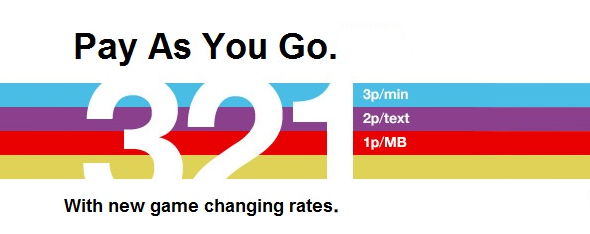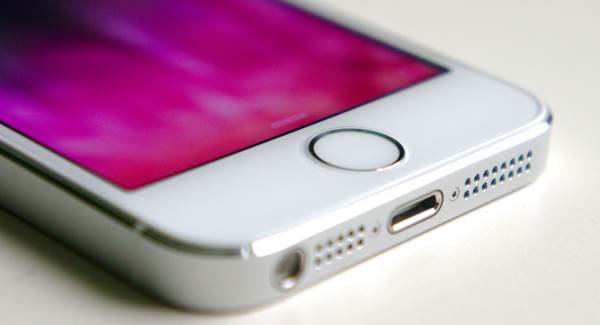
Three Mobile have massively shaken up the UK market with a rather-appealing new pay-as-you-go tariff called 321. The new pricing is the height of simplicity and dirt cheap to boot with calls costing just 3p per minute, texts coming in at only 2p each and mobile data being exceptionally good value with a charge of only 1p/MB.
Compared to the competition, this is clearly far and away the best deal going as long as you are relatively light mobile phone user. While it is possible to get better value from bundles offered by some other mobile networks, the new pricing is hard to beat. To sweeten the deal even more, Three are offering hundred and 150MB mobile web browsing allowance for free every time you top up by £10 or more.
Previously, networks such as White Mobile were offering the cheapest rates available with calls being just 6p a minute and SMS text messages coming in at 5p each. However, they were rather unknown and untested option and only a brave user with transfer their main mobile number to them. However, now Three Mobile – which is a major high-street brand and one of the biggest mobile networks in the UK – is offering rates that totally crush those offered by White Mobile and their other competitors.
In fact, the treaty one tariff is at least half the price of that previously offered by White Mobile and pretty much an order of magnitude cheaper than the other major mobile networks such as Orange, Vodafone, O2, and T-Mobile. It’s hard to think of a good reason why you’d pay 30p for calls on T-Mobile will you get the same thing to any number at any time on Three for just 3p. Likewise, why would you pay 12p for sending a text on O2 when Three are offering you a price of just 2p? The data charges where things get really silly: budget operators such as ASDA Mobile will charge you 50p/MB for mobile data whereas Three’s new tariff is a almost-unbelievable 50x cheaper!
We really welcome the fantastic value offered by this new pricing structure. Hopefully it will really shake up the UK mobile market and encourage competition. The price cuts that they have introduced are pretty astounding and will only mean better value for consumers no matter what network they are on.
This move will only serve to cement Three’s place as one of the fastest-growing networks in the country. While other mobile operators in the UK are struggling to retain their existing users, Three gained over 1 million new customers in 2012. They also the biggest 3G network in the UK right now and have superb high-speed coverage and great data rates.
Is it too good to be true? Well the tariff has been live for a few days now and in our tests has been working fine at the rate advertised. The only catch, if there is any, is that tethering is not allowed on Three’s PAYG plans including this 321 tariff. This means you can only use your PAYG SIM in mobile phone devices and not dongles or tablets such as the iPad. You will also find your account is blocked if you share your phone’s Internet connection by tethering it to a computer or tablet.
So how do I switch?
Switching your phone to Three Mobile in order to take advantage of this great offer is really simple. You don’t even need to change your phone number.
First of all, just make sure that your handset is unlocked so you can use it on Three and that it supports the 3G network that Three uses. Pretty much any modern handset will be fine, but if your phone is particularly old it’s worth checking that it works on 3G as Three does not support 2G any more. If your handset is not unlocked, there are several guides online that make it quite simple or you can always take it to a shop and pay about £5 for them to do it for you.
If you are an existing Three Mobile PAYG customer, switching to the 321 tariff is as simple as calling customer services on 333 from your mobile phone. If not, you can just go to Three’s website and order a free SIM card which they’ll post to you in a couple of days.
Keeping your phone number is really easy as long as you get your PAC code from your existing mobile operator. We’ve got a full guide to switching mobile network and porting your mobile number to a new mobile network already published on the site.
And that’s all there is to it. Runs some quick calculations to see whether you’ll save lots of money by changing to this tariff and if so, get started switching over!
Will you save money if you start using Three’s 321 tariff? Or is your current network offering a better deal? Do you know of any network with better PAYG prices? And, if you think you can save money, are you switching over today?
Continue Reading





Recent Comments